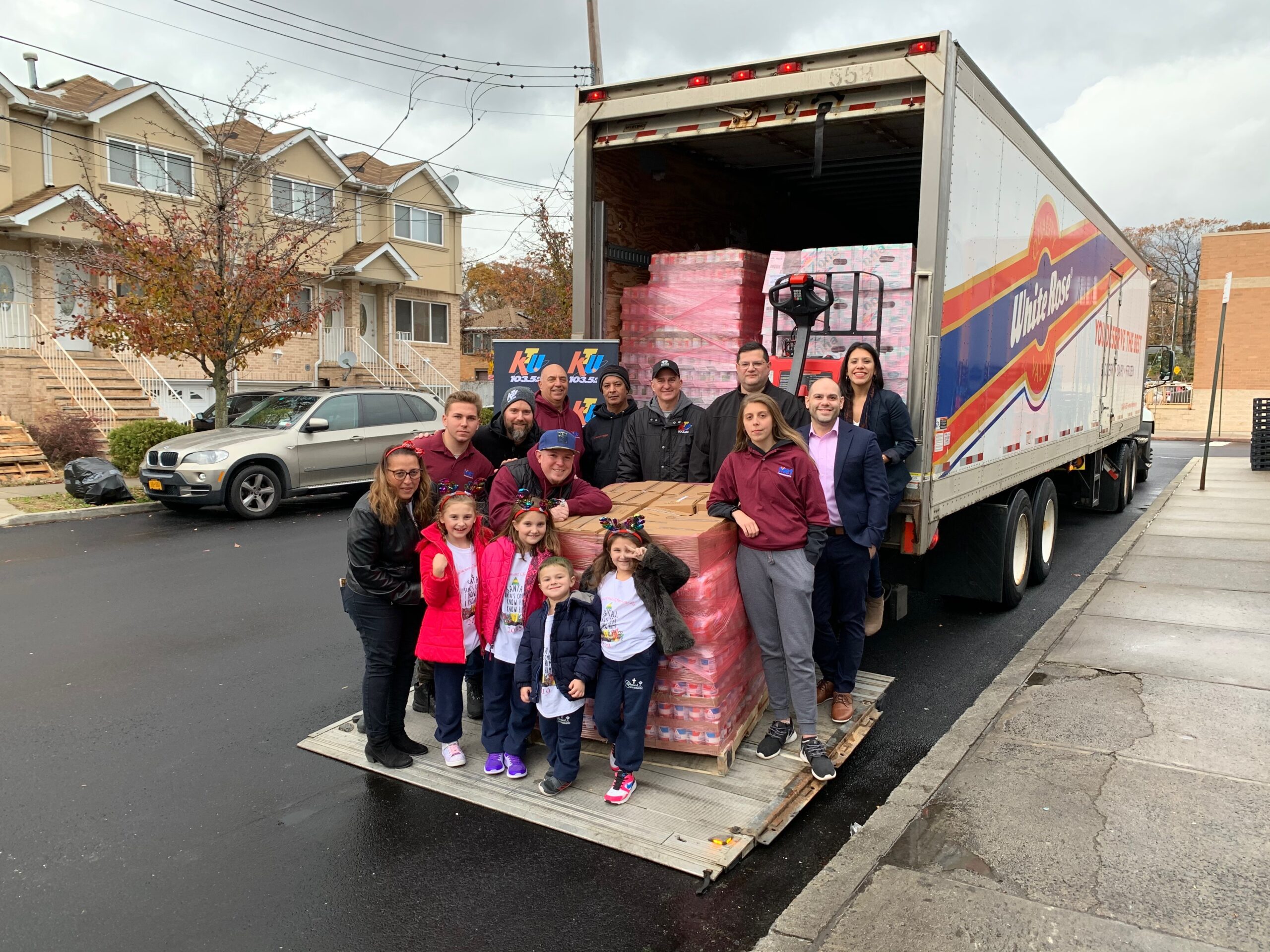
Delving into the intricate world of trucking news, this week’s digest addresses the wave of electric vehicle changes in California, controversy over taxes when met with a challenging business model in Canada, a victory for truck drivers’ restroom rights in Washington state, an innovative technology leap in Ohio, and a crucial response to truck driver shortage across the U.S. These compelling stories showcase the current triumphs, struggles, and opportunities within the trucking industry, highlighting key topics such as clean energy mandates, labor standards, driver health and safety, technological advancements, and the recruitment and retention of a robust workforce. Engage with the most recent happenings and understand the evolution of the trucking landscape across North America as we explore these influential narratives.
1. Californian Wave of Electric Vehicle Change
California’s new mandate is driving a major shift in the transportation sector, with the state’s air regulator now enforcing a full transition to zero-emission vehicles for all drayage trucks by 2035. These drayage trucks are responsible for moving goods from ports to distribution centers, effectively, they serve as the backbone of California’s bustling import industry. This change is part of one of the most ambitious plans yet in the race to reduce harmful emissions and promote cleaner air, especially for communities living close to these major ports and rail yards. Historically, the people residing in these areas have suffered from high rates of pollution-related health issues. While the potential of this is extremely positive for these communities, the swift pace of these regulations has been met with concerns, especially from smaller businesses feeling left in the dust despite being responsible for nearly a third of California’s containerized goods.
Challenges in Transitioning to Electric
Though this move is positive for the environment, it’s quite clear that the logistics of making it happen are far from simple. Even with incentives such as state and federal funding and tax credits being used to offset the high cost of battery-powered or hydrogen trucks, there are many practical challenges as well, such as limited charging or refilling stations. For small truck operators, adapting could mean drastic changes like rerouting to limit battery-intensive highway driving, finding space to install charging stations, and even leasing trucks instead of owning them. There are fears that the burden of these changes could force some operators to shut down or move their operations out of state.
A New Opportunity for Tech Startups
Despite these challenges, certain businesses are adapting successfully. Startups like Forum Mobility, WattEV, and Zeem are emerging as key players offering services to help trucking companies comply with the new zero-emission rules. These include building charging infrastructure, leasing zero-emission vehicles, and handling vehicle maintenance, as well as helping with applications for state and federal incentive programs. These startups, funded by major players like Amazon’s Climate Pledge Fund, have already been absolutely instrumental in supporting businesses in the freight and logistics sectors.
Facing the Infrastructure Challenge
While California has set aside a substantial $1.7 billion for medium and heavy-duty truck charging infrastructure, the task ahead is monumental. The state needs to build more than 450 chargers per week to meet the projected need of 157,000 more chargers by 2030. Additionally, long wait times to extend power to new charging stations and shortages of charger components pose significant logistical hurdles. Regardless of the many hurdles, the mandate is in motion and the transition to electric trucks in the state is inevitable, paving the way for a cleaner and greener transportation industry.
2. Driver Inc: A Deep Dive into the Controversy
Canadian officials representing the trucking industry have called for an end to the Driver Inc. business model, alleging that it’s an unethical tax avoidance scheme. The Driver Inc. model reportedly encourages truck drivers, who don’t own a truck, to register as corporations and sell their services to trucking firms. Industry leaders argue that this model is exploited by some companies to misclassify their workers, thereby skirting tax and withholding obligations.
The Underlying Concerns with Driver Inc.
Proponents of trucking and logistics standards are urging Canada’s Labour Program and Canada Revenue Agency to increase enforcement actions against the Driver Inc. model. Critics assert that this model provides certain carriers with an unfair advantage, while taking advantage of vulnerable workers. They state that drivers operating under the Driver Inc. model are unable to claim employment benefits like overtime pay, vacation pay, severance pay, paid sick days, and more, which are typically provided under labor legislation.
The Urgent Plea for Regulatory Intervention
The calls for stricter enforcement and regulation regarding the Driver Inc. model has been an ongoing effort for years. However, despite these voices, the rise of Driver Inc. has continued on, with a reported increase of 17% between 2018 and 2021. The Canadian government’s attempted efforts to curb the use of Driver Inc., including the introduction of amendments to the labor code and proposed funding to combat the practice, have proved ineffective and have lead industry officials to argue that stronger measures are needed.
The Financial Impact of the Driver Inc. Model
The estimates of tax money lost are no laughing matter, with one official estimate stating that the Driver Inc. model is currently costing the government as much as $1 billion annually in lost tax revenue. Critics assert this is funding that could be otherwise utilized to enhance infrastructure and social safety nets, rather than continuing to benefit dishonest businesses. As of yet, In response to these allegations, the Labour Program and the Canada Revenue Agency have made no comment.
3. A Major Win for Truck Drivers’ Restroom Rights
An unprecedented law aimed at securing restroom access for truck drivers has been enacted in Washington state, set to take effect on July 23. The legislation, HB1457, was unanimously approved and mandates that shippers and consignees provide restroom facilities for truck drivers operating within the state. Various associations, including the Washington Trucking Associations, the Owner-Operator Independent Drivers Association, and the American Trucking Associations, collaborated in the state to advocate for this essential need for truck drivers.
New Restroom Rules and Regulations
This legislative move builds upon a bill signed into law a year ago, requiring terminal operators to provide ample restroom facilities for drayage truckers in accessible areas of the terminal. Compliant restrooms can be either fixed bathrooms or portable toilets, and operators are then considered compliant once a policy is set allowing truck drivers to leave their vehicles at reasonable times and locations to use these facilities. The rule covers all drayage truck operators involved in the loading, unloading, or transporting cargo at the terminal.
Broadening Restroom Access Requirement
Rep. Eric Robertson revived the discussion to expand the restroom access requirement to include shippers and consignees, a provision initially excluded in the previous bill despite the OOIDA’s efforts. The new law addresses a common problem for truck drivers, who are frequently denied restroom access while picking up or delivering cargo. Now, during regular business hours, shippers or consignees must permit restroom access to a motor carrier delivering to or picking up goods from them.
Ensuring Compliance and Enforcing Penalties
The Washington State Department of Health is charged with enforcing this groundbreaking law. Any shipper or consignee found in violation of this rule, after receiving a correction notice, could face fines of $125. Despite the provision for penalties, representatives of the Washington Trucking Associations emphasize that the primary objective of this pursuit is to secure access for drivers, and not to enforce penalties.
4. Groundbreaking Innovation in Trucking Technology
In a major technological breakthrough, EASE Logistics has announced a partnership with the Ohio Department of Transportation (ODOT) and DriveOhio’s Rural Automated Driving Systems (ADS) project to be the first to deploy connected and automated trucking technology on revenue-generating routes in the U.S. This initiative plays a crucial role in real-world testing and holds potential to unlock the full safety and efficiency benefits of truck platooning technology. The data generated by this project will contribute to national ADS policies, facilitating the safe integration of these technologies across the country.
Advanced Vehicle Communication with ‘Tom’ and ‘Jerry’
EASE Logistics has introduced two semi-trucks, playfully nicknamed ‘Tom’ and ‘Jerry,’ which are equipped with artificial intelligence vehicle-to-vehicle communication. When these trucks are in platooning mode, the lead driver controls speed, braking, and acceleration, while the following vehicle, connected and manned, accurately matches the lead vehicle’s movements. This technology, representing a significant step towards safer and more efficient supply chains and rural roads, showcases EASE’s dedication to innovation.
Rigorous Training and Testing for Optimal Deployment
To ensure the smooth deployment of this technology, handpicked EASE drivers underwent a total of 400 hours of training at the Transportation Research Center (TRC). These drivers are currently performing preliminary solo runs to monitor data transmission and identify optimal Ohio routes for platooning. The technology underwent comprehensive testing by Bosch and the TRC prior to being released to EASE for platooning and deployment on revenue-generating routes.
Choosing the Perfect Moment for Platooning Mode
The platooning mode requires that both trucks be manned with a highly trained EASE driver, and is only activated under specific and ideal circumstances — weather, road conditions, and traffic are all carefully considered. The drivers can disengage platooning mode at any time, and the follower truck driver can override platooning mode to assume manual control. EASE aims to pioneer new smart technology initiatives to cement Ohio’s place as the leading state in smart mobility innovation.
5. A Bold Step Towards Alleviating Truck Driver Shortage
In response to the critical shortage of truck drivers in the U.S., the American Trucking Associations and the International Foodservice Distributors Association lauded the introduction of the DRIVE Safe Integrity Act. Brought forth by Representatives Rick Crawford and Henry Cuellar, the bill aims to strengthen the truck driver workforce, focusing on creating new career pathways into interstate trucking with enhanced safety and training standards. The legislation, intended to boost the trucking workforce and streamline the supply chain, comes at a time when the industry requires an influx of 1.2 million new drivers over the next decade to cope with escalating freight demands.
Young Talent: The Untapped Potential in Trucking
The trucking industry, currently facing a shortage of more than 78,000 drivers, encounters a critical hurdle as U.S. Department of Transportation regulations prohibit a key demographic of job seekers – those aged 18-20 – from engaging in interstate trucking. These potential drivers, who are already permitted to obtain a Commercial Driver’s License (CDL) and operate heavy-duty commercial vehicles within state boundaries, are barred from interstate commerce due to federal rules. As such, this prospective talent pool often ends up in other industries, further deepening the driver shortage.
DRIVE Safe Integrity Act: Paving the Pathway for Young Drivers
The DRIVE Safe Act was modeled into a nationwide pilot program, the Safe Driver Apprenticeship Pilot Program, by a bipartisan infrastructure law from 2021. This program was designed to allow younger drivers to operate interstate, with stringent safety and training measures. However, due to superfluous USDOT requirements, the program saw less than a dozen driver participants enroll out of a possible 3,000. The DRIVE Safe Integrity Act is poised to rejuvenate the pilot program by urging the DOT to enhance participation and provide comprehensive reports to Congress on the program’s progress.
Building a Sustainable Apprenticeship Program for Young Drivers
Upon the conclusion of the pilot program, the DRIVE Safe Integrity Act mandates the DOT to evaluate the safety data and establish regulations for a permanent apprenticeship program for commercial drivers aged 18-20. This approach promises to open up new avenues for young drivers to safely enter the workforce, ensuring the industry is equipped with the necessary talent to meet future freight demands. The move underscores the continuous effort to streamline the industry and meet the growing freight requirements in the coming years.
Before You Hit The Road…
Well, there you have it. We have navigated through the most significant trucking news that unfolded this week. Each of these stories contribute to the dynamic dialogue shaping our trucking landscape. Each story presents its own challenges and triumphs, offering a glimpse into the evolving complexities and exciting potential of the trucking world. We’re curious to know, how do you perceive these developments? Do share your thoughts and insights in the comments section below. Remember, the trucking narrative is constantly unfolding, and we invite you to stay updated with us. Join us next week for another edition of the weekly trucker news roundup, as we continue exploring the vibrant trucking industry.
If you made it to this part of the article, we’d just like to take a moment to thank you for taking the time to read this weekly recap. Be safe out there and as always, If you’re in search of CDL A, B, or warehouse positions, check out our open positions. And if you need staffing solutions for commercial driving or industrial positions, be sure to explore our offerings.



